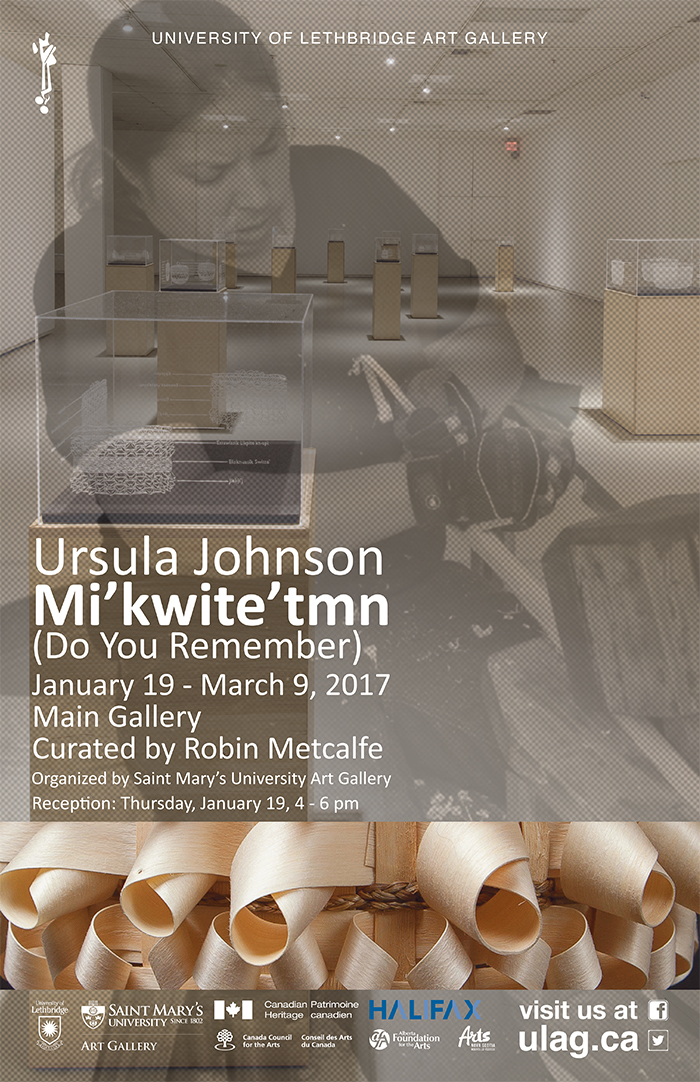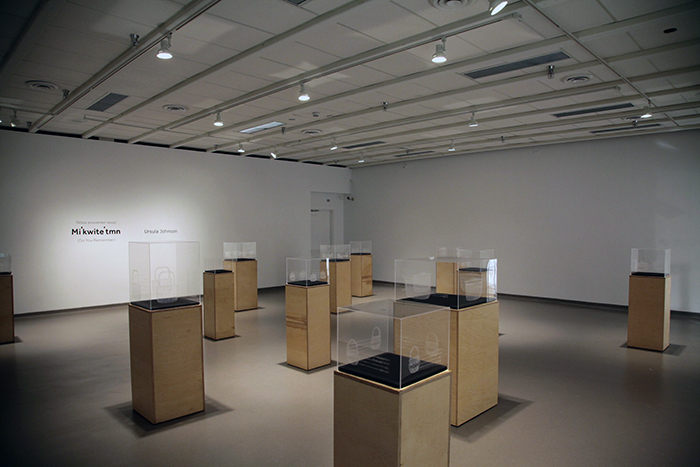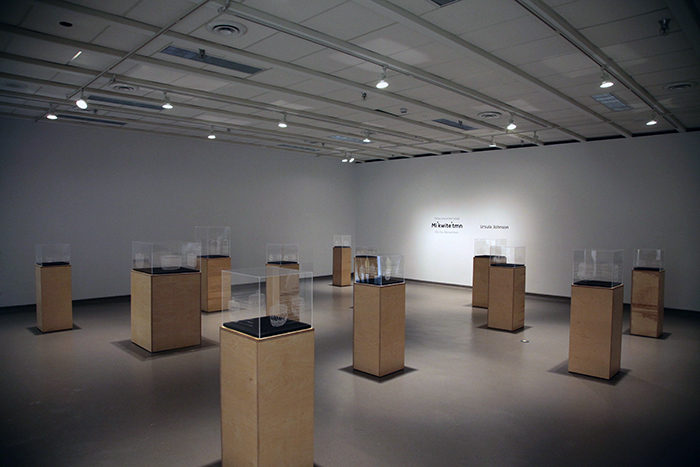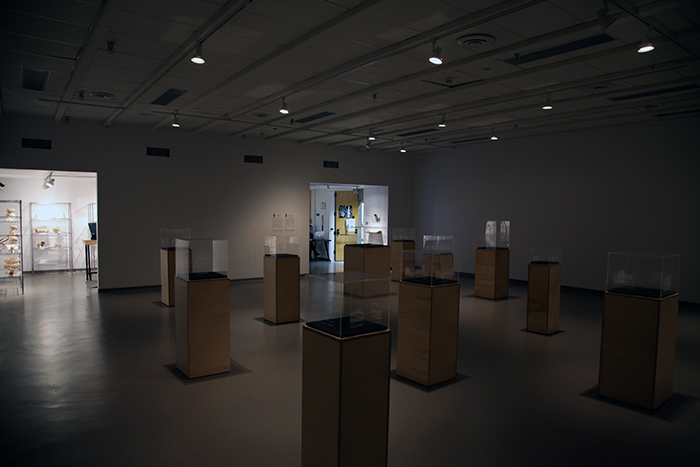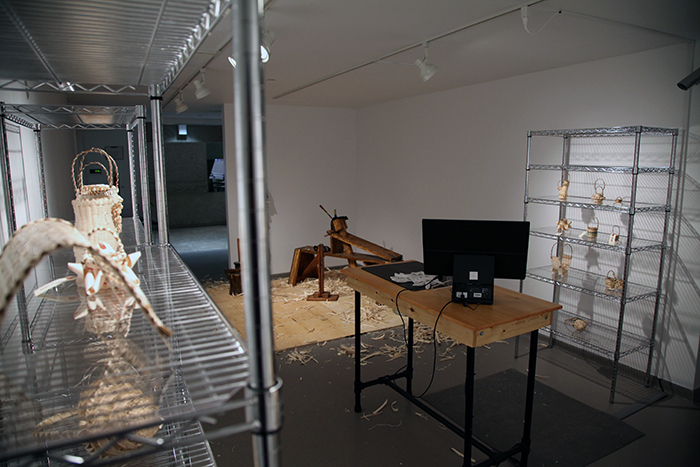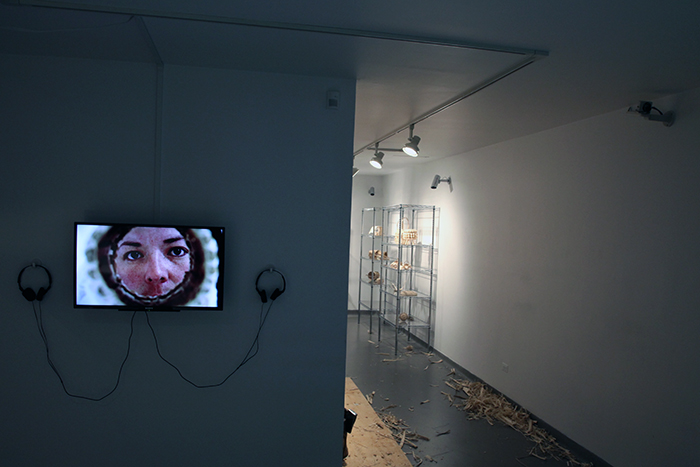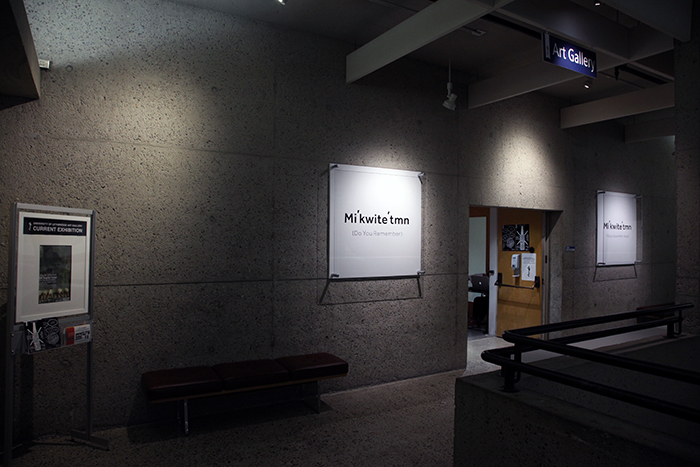Main Gallery
Ursula Johnson: Mi’kwite’tmn (Do You Remember)
January 19 – March 9, 2017
Organized by Saint Mary’s University Art Gallery
Curated by Robin Metcalfe
Presented with the funding assistance of the Government of Canada – Department of Canadian Heritage
Mi’kwite’tmn (Do You Remember) – pronounced Mih-gwih-DAY-duh-min – examines ideas of ancestry, identity and cultural practice. Mi’kmaw artist Ursula Johnson deconstructs and manipulates the function and image of Mi’kmaw basketry using traditional techniques to build non-functional forms.
Mi’kwite’tmn is comprised of three exhibition components. First, the Museological Grand Hall holds vitrines (plexiglass display cases) etched with silkscreened and sandblasted images of baskets made by Johnson’s great-grandmother, Caroline Gould. Specific Mi’kmaw terminology associated with particular techniques is also used to label the diagrams.
The second component is the Performance Space featuring neo-artifacts activated by an endurance performance by the artist. Johnson processes harvested ash wood in a way that resembles traditional techniques, but deliberately reduces the wood to only an accumulation of shavings.
The final space, the Archive Room, is an interactive area housing O’pltek forms that have been tagged and catalogued. A workstation allows visitors to scan the information tag of each O’pltek and to interact with the objects’ digital records.
By questioning museological methods of collecting, categorising and archiving, Johnson explores, and intervenes in, the impact of colonialism on Indigenous material culture and language.
Curated by Robin Metcalfe, organised and circulated by Saint Mary’s University Art Gallery, Halifax in collaboration with Unama’ki College. With the support of the Department of Canadian Heritage, Arts Nova Scotia and the municipality of Halifax.
Mi’kwite’tmn (Vous souvenez-vous) – prononcé Mé-goui-DÉ-da-mine – se penche sur des notions d’héritage, d’identité et de pratique culturelle. Ursula Johnson, artiste mi’kmaq, déconstruit et manipule la fonction et l’image de la vannerie mi’kmaq, se servant de techniques traditionnelles pour créer des formes non fonctionnelles.
Mi’kwite’tmn comprend trois composantes. D’abord, la Grande salle muséologique contient des vitrines (présentoirs en plexiglas) portant des images de paniers, sérigraphiées ou gravées au jet de sable, réalisées par l’arrière-grand-mère de Johnson, Caroline Gould. Une terminologie spécifiquement mi’kmaq, associée à des techniques particulières, sert également à l’étiquetage des diagrammes.
La deuxième composante est l’Espace performatif où sont présentés des néo-artéfacts activés par une performance d’endurance de l’artiste. Cette dernière travaille du bois de frêne récolté d’une manière qui rappelle les techniques traditionnelles, mais elle réduit délibérément le bois à une simple accumulation de copeaux.
Le dernier espace, la Salle d’archives, est une zone interactive qui abrite des formes O’pltek qui ont été étiquetées et cataloguées. Un poste de travail permet aux visiteurs de scanner les étiquettes de chaque O’pltek et d’interagir avec les archives numériques de ces objets.
En interrogeant les méthodes de collectionnement, de catégorisation et d’archivage des musées, Jonhson explore l’impact du colonialisme sur la culture matérielle et sur la langue indigènes en y intervenant.
Sous le commissariat de Robin Metcalfe, l’exposition est organisée et mise en circulation par la Saint Mary’s University Art Gallery, Halifax en collaboration avec l’Unama’ki College. Grâce à l’appui financier du Départment de Patrimoine canadien, de Arts Nouvelle-Écosse et de la municipalité régionale de Halifax.
